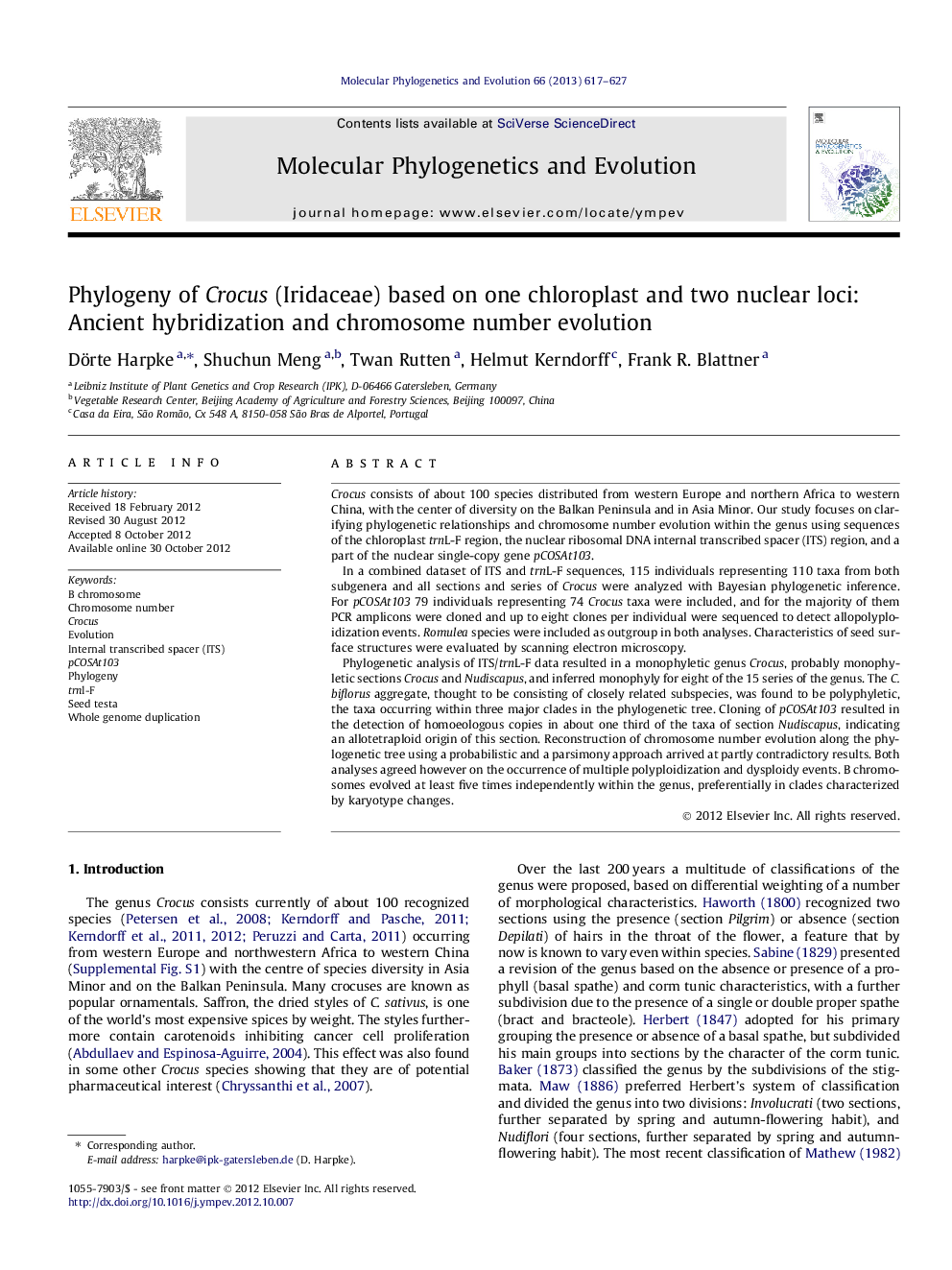| Article ID | Journal | Published Year | Pages | File Type |
|---|---|---|---|---|
| 2833935 | Molecular Phylogenetics and Evolution | 2013 | 11 Pages |
Crocus consists of about 100 species distributed from western Europe and northern Africa to western China, with the center of diversity on the Balkan Peninsula and in Asia Minor. Our study focuses on clarifying phylogenetic relationships and chromosome number evolution within the genus using sequences of the chloroplast trnL-F region, the nuclear ribosomal DNA internal transcribed spacer (ITS) region, and a part of the nuclear single-copy gene pCOSAt103.In a combined dataset of ITS and trnL-F sequences, 115 individuals representing 110 taxa from both subgenera and all sections and series of Crocus were analyzed with Bayesian phylogenetic inference. For pCOSAt103 79 individuals representing 74 Crocus taxa were included, and for the majority of them PCR amplicons were cloned and up to eight clones per individual were sequenced to detect allopolyploidization events. Romulea species were included as outgroup in both analyses. Characteristics of seed surface structures were evaluated by scanning electron microscopy.Phylogenetic analysis of ITS/trnL-F data resulted in a monophyletic genus Crocus, probably monophyletic sections Crocus and Nudiscapus, and inferred monophyly for eight of the 15 series of the genus. The C. biflorus aggregate, thought to be consisting of closely related subspecies, was found to be polyphyletic, the taxa occurring within three major clades in the phylogenetic tree. Cloning of pCOSAt103 resulted in the detection of homoeologous copies in about one third of the taxa of section Nudiscapus, indicating an allotetraploid origin of this section. Reconstruction of chromosome number evolution along the phylogenetic tree using a probabilistic and a parsimony approach arrived at partly contradictory results. Both analyses agreed however on the occurrence of multiple polyploidization and dysploidy events. B chromosomes evolved at least five times independently within the genus, preferentially in clades characterized by karyotype changes.
Graphical abstractFigure optionsDownload full-size imageDownload as PowerPoint slideHighlights► We provide the first exhaustive phylogeny of crocuses based on nuclear sequences. ► We reconstruct chromosome number evolution and polyploidization in Crocus. ► 8 out of 15 series of Crocus are monophyletic, as well as probably both sections. ► Chromosome numbers increased multiple times independently by polyploidization. ► Supernumerary B chromosomes evolved at least five times independently within Crocus.
